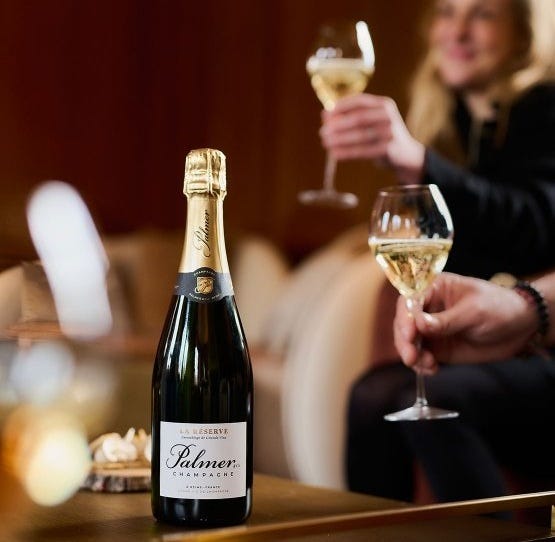When most people think of Champagne, they envision effervescent flutes, celebratory toasts, and luxurious indulgence. But behind the iconic bubbles lies a blend of artistry and agriculture—particularly, a selection of specific grape varieties that shape the flavor, structure, and style of every bottle. Despite the fame of the name, many are surprised to learn that only a small number of grape types are legally permitted in the production of true Champagne. Let’s explore their characteristics, and how they come together to define the taste of the world’s most prestigious sparkling wine.
The Big Three: Pinot Noir, Chardonnay, and Meunier
Champagne is made primarily from three grape varieties, each contributing different traits to the wine.
Pinot Noir
Making up about 38% of vineyard plantings in Champagne, Pinot Noir is the backbone of many cuvées. It brings body, structure, and a complex red fruit character—think cherry, raspberry, and sometimes subtle spice. Though it’s a black grape, it’s often used to make white sparkling wine because the juice is pressed gently, avoiding color extraction from the skins. In Blanc de Noirs Champagnes (white Champagne made from black grapes), Pinot Noir is usually the dominant or sole variety.
Chardonnay
Representing roughly 30% of plantings, Chardonnay adds finesse and longevity. Known for its bright acidity and floral, citrus-driven aromatics, Chardonnay is essential for creating elegant, age-worthy Champagnes. It is the exclusive grape in Blanc de Blancs Champagnes, prized for their purity, minerality, and crisp finish. Chardonnay thrives particularly well in the Côte des Blancs, a subregion south of Épernay known for chalky soils that enhance the grape’s elegance.
Meunier (formerly Pinot Meunier)
Often underestimated, Meunier accounts for about 32% of Champagne vineyards. It ripens earlier and is more resistant to frost, making it a vital component in the region’s climate. Meunier contributes fruitiness, roundness, and a youthful charm to blends. While traditionally viewed as a supporting grape, it’s now gaining recognition in its own right, with some producers crafting 100% Meunier Champagnes that showcase its generous character.
Other Permitted Grapes: Rare but Real
In addition to the main trio, the Champagne AOC regulations allow four other grape varieties—though they collectively account for less than 0.3% of vineyard area. These historical varieties are:
-
Pinot Blanc
-
Pinot Gris
-
Petit Meslier
-
Arbane
These grapes were more commonly grown in centuries past, but today they are used mostly by a handful of producers seeking to revive forgotten traditions or craft niche cuvées. They can add unique floral, herbal, or apple-like qualities, and are sometimes blended into “heritage” Champagnes for complexity.
Blending as an Art Form
Unlike most still wines, Champagne is usually a blend—not only of grapes, but also of different vineyard plots, vintages, and reserve wines. The goal is consistency and balance. Pinot Noir provides structure, Chardonnay brings lift and precision, and Meunier adds approachability and fruit-forward charm. The exact mix depends on the house style. For example, Bollinger tends to favor Pinot Noir for its depth and richness, while Ruinart is known for its Chardonnay-driven elegance.
Why Grape Composition Matters
Understanding the grape varieties behind Champagne isn’t just wine-geek trivia—it informs your tasting experience. A Blanc de Blancs made from 100% Chardonnay will be sharper and more linear than a fuller-bodied Blanc de Noirs made from Pinot Noir and/or Meunier. A non-vintage blend from a large house might emphasize consistency and approachability, while a grower Champagne made from lesser-known grapes may lean into uniqueness and terroir expression.
Final Thoughts
Next time you pop open a bottle of Champagne, take a moment to consider the grapes that went into it. Whether it’s the refined structure of Chardonnay, the strength of Pinot Noir, or the roundness of Meunier, each grape plays a role in the complexity and celebration of Champagne. Behind every bubble lies a blend born from centuries of tradition and the nuances of the vine.
Image Credit: https://www.champagne-palmer.fr/en/
(Served at Churrasco Phuket Steakhouse)
_ _ _
© CHURRASCO PHUKET STEAKHOUSE / ALL RIGHTS RESERVED
Reprinting, reposting & sharing allowed, in exchange for a backlink and credits
Churrasco Phuket Steakhouse serves affordable Wagyu and Black Angus steaks and burgers. We are open daily from 12noon to 11pm at Jungceylon Shopping Center in Patong / Phuket.
We are family-friendly and offer free parking and Wi-Fi for guests. See our menus, reserve your table, find our location, and check all guest reviews here:
https://ChurrascoPhuket.com/
#Churrascophuket #jungceylon #phuketsteakhouse #affordablewagyu #wagyu

